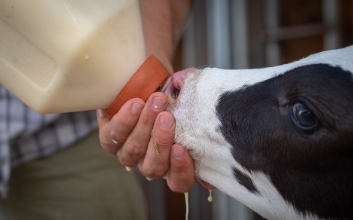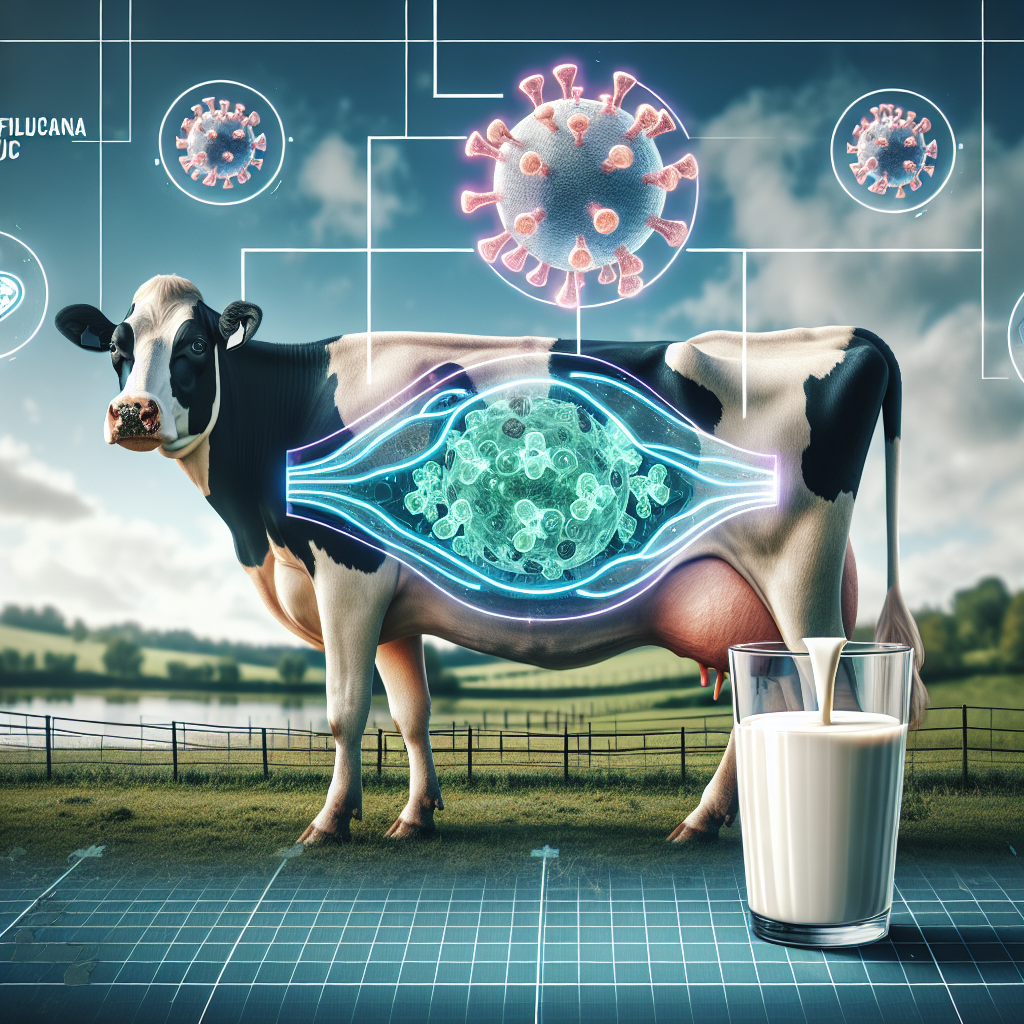Learn how to improve colostrum quality in dairy cows with important nutritional and management tips. Want healthier calves? Discover the secrets to maintaining high-quality colostrum all year round.

Consider this: as a dairy producer, you play a crucial role in ensuring that a newborn calf begins life with the necessary immunity and nourishment to flourish. This is precisely what occurs when calves receive enough high-quality colostrum. Your efforts in providing this first milk, rich in antibodies and nutrients, are critical for the development and immunity of the calves in your care. However, you may need assistance assuring a consistent supply of high-quality colostrum throughout the year. Without it, calves are more prone to get ill, develop slowly, and suffer, reducing overall herd output. Understanding how a cow’s nutrition, health, and surroundings affect colostrum quality is critical for any dairy farmer concerned about their herd’s welfare and future.
The Interplay of Individual Animal Factors on Colostrum Production
Understanding what controls colostrum production is critical for ensuring calves get the nutrition and antibodies they need for a healthy start. Individual animal characteristics such as parity, calf gender, and birth weight all substantially influence colostrum quantity and quality.
A cow’s parity strongly influences colostrum production or the number of pregnancies. Cows in their second or third party often produce higher-quality colostrum than first-calf heifers because of their better-developed mammary glands and overall health. However, older cows may have lower colostrum quality owing to metabolic load and health concerns.
The sex of the calf also influences colostrum composition. According to research, cows giving birth to male calves often generate colostrum with somewhat different features than those giving birth to female calves, most likely related to hormonal changes during pregnancy. For example, colostrum from cows with male calves may have more immunoglobulin, facilitating greater immunological transmission.
Calf birth weight is another critical consideration. Heavier calves produce more colostrum owing to greater suckling power and frequency—the increased need prompts the cow’s body to generate more nutritious colostrum. On the other hand, lighter calves may not produce as much, impairing their first immunological protection and development.
These elements interact in a complicated manner, influencing colostrum output and quality. Dairy farmers must consider these elements when developing breeding and feeding programs to improve calf health and production.
The Crucial Role of Metabolic Health in Colostrum Production
A cow’s metabolic condition is critical to the quality and quantity of its colostrum. An ideal body condition score (BCS) of 3.0 to 3.5 is associated with higher-quality colostrum. An imbalance in BCS may alter energy balance and impair colostrum synthesis. Cows with negative energy balance during transition had lower colostrum output and quality. This might be due to a poor diet or metabolic adaption difficulties, resulting in reduced immune function.
Maintaining a positive or balanced energy level via correct diet and control promotes healthy colostrum production. Dairy producers may dramatically boost colostrum quantity and composition by ensuring cows have an adequate BCS and balanced energy status, increasing newborn calves’ immunity and health. Close monitoring and dietary interventions are critical for attaining these results.
Dairy cows need rigorous metabolic control to produce high-quality colostrum, emphasizing the necessity of specialized nutrition throughout the prenatal period.
Prepartum Nutrition: The Keystone of Quality Colostrum Production
Prepartum nutrition is critical for colostrum production and quality. Dairy producers must grasp the need to maintain an appropriate balance of metabolizable energy and protein before calving. Proper energy levels boost general metabolic activities, which increases colostrum production. High-quality protein sources provide the amino acids required for immunoglobulins and other important colostrum components. Additionally, diets that meet or exceed caloric and protein requirements increase colostrum immunoglobulin concentrations.
Vitamins, minerals, and feed additives all play an essential role. For instance, Vitamin A is crucial for developing the immune system, Vitamin D aids in calcium absorption, and Vitamin E is an antioxidant that protects cells from damage. Selenium and zinc play critical roles in immunological function and directly impact colostrum quality. Vitamin E and selenium, for example, work synergistically to increase colostrum’s antioxidant qualities, boosting the calf’s immune system. Feed additives such as prebiotics, probiotics, and particular fatty acids may enhance colostrum quality by promoting cow gut health and enhancing beneficial components.
Investing in a thorough prepartum nutrition plan that balances calories, proteins, vital vitamins, minerals, and strategically placed feed additives may significantly increase colostrum output and quality. This improves newborn calves’ health and development, increasing production and efficiency on dairy farms.
Effective Management Strategies for Maximizing Colostrum Production in Dairy Cows
Effective management tactics are critical for maximizing colostrum production in dairy cows. These tactics include maintaining a clean and comfortable prepartum environment, ensuring cows are not overcrowded, providing adequate ventilation, and ensuring cows are well-fed. Overcrowding, poor ventilation, and insufficient feeding may all negatively influence colostrum supply and quality. A quiet, clean, and well-ventilated atmosphere may significantly improve colostrum production.
Another important consideration is the duration of the dry spell. A dry interval of 40 to 60 days is suggested to give the mammary gland time to repair before lactation. Research shows cows with shorter or significantly extended dry spells produce less colostrum or inferior quality.
The time of colostrum extraction after calving is significant. Harvesting colostrum during the first two hours after calving offers the most nutritional and immunological value, giving the newborn calf the best possible start.
Additionally, giving oxytocin, a naturally occurring hormone may aid colostrum release. Oxytocin promotes milk ejection, which is advantageous for cows struggling with natural letdowns due to stress or other circumstances.
Implementing these measures can significantly enhance colostrum supply and quality, thereby improving the health and vitality of their newborn calves. This potential for improvement should inspire and motivate you as a dairy producer.
Ensuring the Quality and Integrity of Colostrum: Best Practices for Optimal Newborn Calf Health
Ensuring the quality and integrity of colostrum is critical to newborn calf health. Use a Brix refractometer to determine the quality, aiming for 22% or above. Once the quality is confirmed, colostrum should be chilled to 39°F (4°C) before usage within 24 hours. For long-term storage, freeze at -0.4°F (-18°C) for up to a year. It’s essential to do so gently when thawing in warm water (no hotter than 113°F or 45 °C) to prevent protein denaturation. Avoid using microwaves for thawing.
Heat treatment kills germs while maintaining colostrum’s advantages. Pasteurize at 140°F (60°C) for 60 minutes to preserve immunoglobulins and growth factors. Freeze in tiny, flat containers or specialized bags to ensure equal freezing and thawing. To prevent protein denaturation, thaw gently in warm water (no hotter than 113°F or 45°C); avoid using microwaves.
Following these best practices ensures calves get the full advantages of high-quality colostrum, resulting in healthier, more robust animals and increased production and profitability in your dairy farm.
Bridging the Knowledge Gaps in Colostrum Production: The Path to Enhanced Dairy Farm Productivity
Despite the existing knowledge gaps in colostrum production, your expertise as a dairy producer is invaluable. Your understanding of the factors influencing colostrum production, such as metabolizable energy, protein, and specific feed additives, is crucial. Controlled research is required to enhance further our understanding of how different dry periods and prepartum environmental variables impact colostrum. Your knowledge and experience are critical to bridging these gaps and improving dairy farm productivity.
Little research has been done on how stress and cow welfare affect colostrum. As dairy farms grow, balancing production and animal welfare is critical. The influence of seasonal fluctuations on colostrum output and composition requires more investigation to detect and counteract environmental stressors.
More studies are required to determine the ideal interval between calving, collecting colostrum, and using oxytocin. The effects of heat treatment and storage on colostral components must also be studied to standardize techniques and maintain colostrum quality.
Addressing these gaps will equip dairy farmers with data-driven techniques for increasing colostrum production and management, improving calf health and farm output. This attempt will need the integration of dairy science, animal nutrition, and stress physiology.
The Bottom Line
High-quality colostrum is critical for delivering crucial nutrients and immunity to newborn calves. This article investigates how parity, genetic characteristics, and metabolic health impact colostrum quality, considering seasonal and herd-level variables. A prepartum diet must be balanced with enough calories, protein, vitamins, and minerals. Effective management measures, such as prompt colostrum collection and adequate storage, retain its quality, resulting in healthier calves and higher herd output. Integrating these nutritional and management measures promotes calf health and development, providing a solid basis for future herd output. Continued research will improve dairy farming, ensuring every newborn calf has the best start possible.
Key Takeaways:
- Individual Variability: Factors such as parity, the sex of the calf, and calf birth weight significantly influence colostrum yield and composition.
- Metabolic Health: Indicators of the cow’s metabolic status are critical in determining the quality and quantity of colostrum produced.
- Prepartum Nutrition: Adequate metabolizable energy, protein, vitamins, minerals, and specific feed additives during the prepartum period are essential for optimal colostrum production.
- Management Strategies: Environmental conditions and the length of the dry period before calving play a pivotal role in colostrum production.
- Harvest and Handling: The time from calving to colostrum harvest and methods of storage, including heat treatment, are vital for maintaining colostrum integrity and efficacy.
- Research Gaps: There remain significant gaps in understanding how prepartum nutrition and management precisely affect colostrum production, indicating a need for further research.
Summary:
Dairy producers are crucial in providing newborn calfs with immunity and nourishment through high-quality colostrum. Factors like parity, calf gender, and birth weight significantly influence colostrum quantity and quality. Cows with better-developed mammary glands and overall health often produce higher-quality colostrum than first-calf heifers. Older cows may have lower colostrum quality due to metabolic load and health concerns. The sex of the calf also influences colostrum composition, with male calves producing more colostrum due to greater suckling power and frequency, while lighter calves may not produce as much, impairing their first immunological protection and development. Metabolic health is essential for colostrum quality and quantity, and effective management strategies are crucial for maximizing colostrum production in dairy cows.












